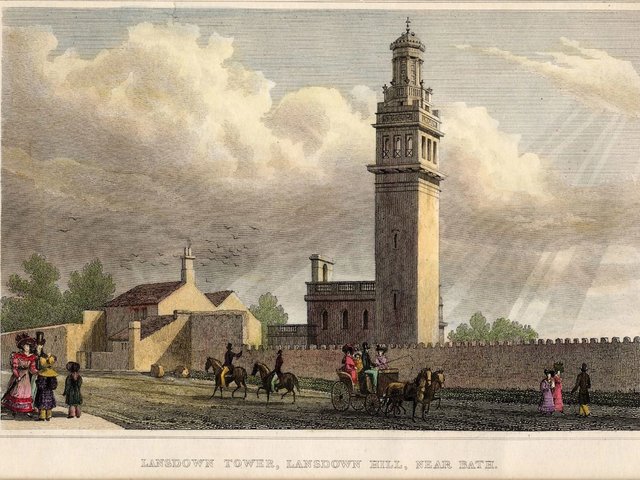William Beckford, compulsive builder, self-mythologist, spendthrift and epicene, occupies a place somewhere below Horace Walpole in the artistic pantheon of the eighteenth century. The chief monument to his life is his minor Gothick masterpiece, Vathek. The monument he intended to bequeath to society, the frail folly known as Fonthill Abbey, collapsed almost immediately it was sold (for £300,000) to the senile gunpowder magnate John Farquhar. This implosion of the image he sought to create for himself was typical; his extravagance, artifice and wealth gave him a façade which never quite concealed his failings as a politician, socialite, husband, father, fantasist and connoisseur.
Through the architect of Fonthill, James Wyatt, Beckford attempted to insinuate himself into the artistic establishment, promising to spend £360,000 “in purchasing Modern Art.” He invested in works by Turner and Benjamin West, but his tastes was aberrant. His patronage of Turner is evidence by the painter’s 1797 view of Fonthill, but Beckford sold most of his Turners because they were topographically inaccurate; he never bought a Constable, and the sole artist whom he consistently favoured was John Robert Cozens. He dabbled in landscape gardening and employed a legion of builders, jewellers and man-servants to realise his whims both large and small. Never, though, did he rise much above the status of an artful dilettante.
Timothy Mowl’s new biography of Beckford explores this familiar ground, but also sets out to revise conventional views of the man and his art. It pointedly addresses the issues that other writers on Beckford have treated rather more cautiously: his libertine enthusiasms; his paedophilia and the fraudulence of his literary self-portrait.
Beckford is identified as a key early Romantic, and Mr Mowl emphasises the connection between his wayward nature and his no less wayward aesthetics. In doing so, however, he tends towards the sensational. The quality of the scholarship is not in question, but it is frequently larded with exaggeration. Thus Beckford becomes “a sexual and architectural Lucifer”; it is suggested that in old age he was continually torn between directing his pet artisans and “disdainfully eyeing up his footmen” and we are told, quite blithely, that “the great age of sodomy passed away when domestic servants became unfashionable.”
The biography’s subtitle, “composing for Mozart”, signposts Beckford’s taste for overstatement. Beckford, in a predictably grandiose move, claimed to have written an air for Le nozze di Figaro when he was six and Mozart eight. This serves as a metaphor for all the “puff, bluffs and outright lies” which Beckford used to promote his ideas and status.
Mr Mowl has made scrupulous study of the Beckford papers in Oxford’s Bodleian Library, but his picture of Beckford, though rich in detail and colour, gives the impression of being intent, not just on redressing the inadequacies of previous scholarship, but on submerging Beckford’s admitted flashes of brilliance beneath the dross of his absurdities, posturing and deceits. In the end it is perhaps a little baffling that Mr Mowl has lavished so much attention on a subject for whom he appears to feel such scant sympathy.
Originally appeared in The Art Newspaper as 'A sexual and architectural Lucifer'


